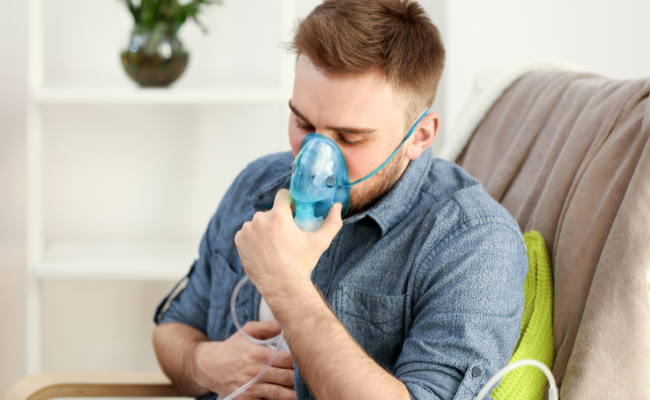How to Treat Acute Respiratory Distress Syndrome?
- February 01, 2024
- No Comments

What is Acute Respiratory Distress Syndrome (ARDS)?
Acute Respiratory Distress Syndrome (ARDS) is a critical and life-threatening lung condition triggered by injuries or illnesses. It causes rapid inflammation in the lungs, leading to fluid accumulation in air sacs, impairing oxygen exchange and resulting in severe respiratory failure. Conditions like pneumonia, sepsis, trauma, or exposure to harmful substances can prompt ARDS. This condition hinders proper lung function, causing dangerously low oxygen levels (hypoxia) in the bloodstream.
Healthcare providers diagnose ARDS severity based on oxygen levels, categorizing it as mild, moderate, or severe. ARDS not only affects lung function but also endangers other vital organs by depriving them of essential oxygen. Typically occurring in a hospital setting during treatment for infection, illness, or trauma, if symptoms arise outside of a hospital, immediate medical attention is crucial.
Why is Treating Acute Respiratory Distress Syndrome Important?
Treating ARDS is vital due to its critical impact on respiratory function and overall oxygenation of the body. The condition can lead to a significant decrease in lung capacity, depriving vital organs of oxygen and potentially resulting in organ failure. Prompt and effective treatment is essential to prevent further complications, reduce mortality rates, and improve the chances of recovery.
How is Acute Respiratory Distress Syndrome Treated?
The treatment of ARDS involves a combination of supportive measures, mechanical ventilation, and addressing the underlying cause of the condition.
Treatment Solutions for Acute Respiratory Distress Syndrome:
- Mechanical Ventilation: Low Tidal Volume Ventilation: Mechanical ventilation is a cornerstone of ARDS treatment. Low tidal volume ventilation, which involves delivering small breaths to minimize lung injury, is a standard approach.
- Positive End-Expiratory Pressure (PEEP): PEEP is applied to maintain positive pressure in the lungs at the end of each breath, preventing the collapse of air sacs and improving oxygenation.
- Prone Positioning: Improving Oxygenation: Placing patients with ARDS in a prone position (lying face down) can help distribute ventilation more evenly in the lungs, improving oxygenation.
- Reducing Ventilator-Induced Lung Injury: Prone positioning is known to decrease the risk of ventilator-induced lung injury, a common concern in ARDS patients.
- Fluid Management: Conservative Fluid Strategy: Maintaining a conservative approach to fluid management helps prevent fluid overload, a common complication in ARDS. This approach aims to balance maintaining adequate perfusion while avoiding excessive fluid administration.
- Medications: Corticosteroids: In certain cases, corticosteroids may be prescribed to reduce inflammation in the lungs. However, their use is often based on individual patient factors and the underlying cause of ARDS.
- Neuromuscular Blocking Agents: These medications may be used to facilitate mechanical ventilation and improve patient-ventilator synchrony in severe cases.
- Antibiotics: If infection is the cause of ARDS, prompt administration of antibiotics is crucial to control the infection.
- Treatment of Sepsis: In cases where sepsis is the trigger, addressing the underlying infection and providing supportive care for sepsis is fundamental.
Benefits of Acute Respiratory Distress Syndrome Treatment:
- Improved Oxygenation: The primary goal of ARDS treatment is to enhance oxygenation, preventing hypoxemia and supporting vital organ function.
- Reduced Mortality Rates: Timely and appropriate treatment strategies, including lung-protective ventilation and addressing the underlying cause, contribute to reduced mortality rates in ARDS patients.
- Prevention of Complications: Adequate fluid management and prone positioning help prevent complications such as ventilator-induced lung injury and fluid overload, improving overall patient outcomes.
- Enhanced Lung Function: Mechanical ventilation strategies, including low tidal volume ventilation and PEEP, aim to preserve lung function and minimize further injury.
- Individualized Care: Tailoring treatment to the underlying cause and individual patient characteristics ensures a more effective and personalized approach to ARDS management.
Comments (0)